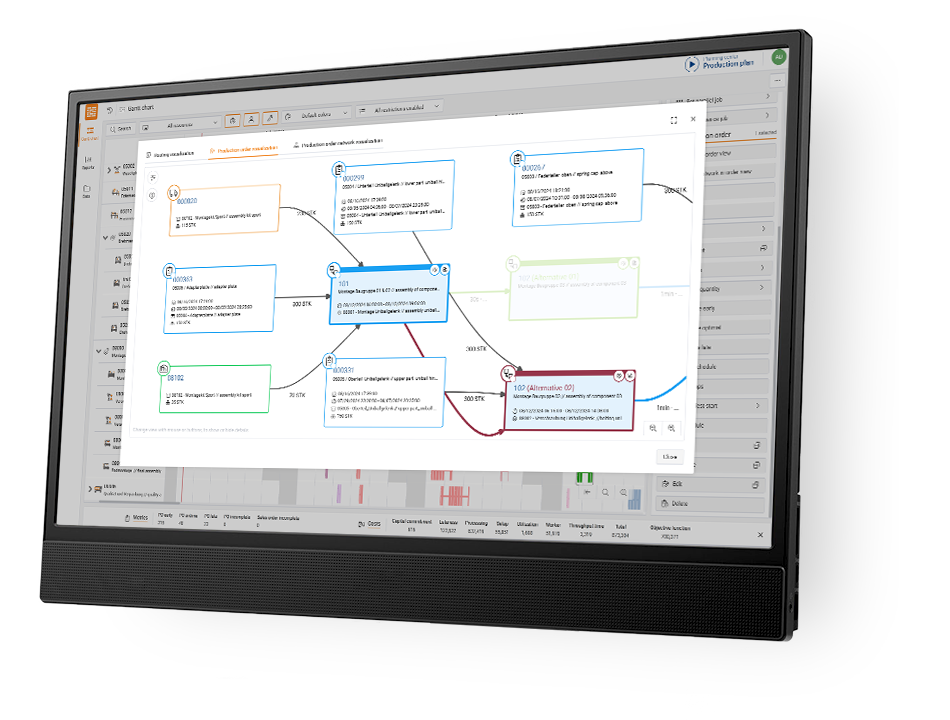Effective production planning is crucial for manufacturing companies striving to maintain competitiveness, efficiency, and profitability in a rapidly changing market. Accurate and agile production planning ensures optimal resource usage, timely delivery, cost management, and customer satisfaction. Yet, many businesses face significant hurdles in achieving smooth and effective planning processes. Here we explore five major challenges and how they impact production.
1. Lack of Transparency Over the Entire Value-Added Process
Companies often struggle with visibility across their complete value chain. Without real-time insights into inventory, workflow status, and supply chain stages, inefficiencies arise, such as delays and increased operational costs. For instance, an automotive component manufacturer may face disruptions if it lacks visibility into the supplier’s operations, causing delays that ripple throughout production lines.
2. Rigidity of Traditional Systems
Excel and other static spreadsheet solutions, although commonly used, lack flexibility to adapt to daily production dynamics. Changes in demand, unexpected downtimes, or urgent order reprioritisation are cumbersome to manage. Consider a consumer electronics producer using Excel sheets: frequent changes in consumer demand lead to continuous, labour-intensive revisions, heightening the risk of errors and bottlenecks.
3. Difficulties with Daily Order Scheduling
Accurate daily scheduling is challenging due to fluctuating demand, varying order volumes, and resource availability. A food processing company, for instance, dealing with perishable goods might face significant losses if scheduling errors lead to inventory spoilage or delays in order fulfilment, highlighting the need for a flexible and robust scheduling solution.
4. High Communication Effort
Efficient production planning requires seamless communication across multiple departments such as procurement, sales, logistics, and manufacturing. High communication demands increase the likelihood of miscommunications, delays, and costly mistakes. For example, a packaging manufacturer might experience delays if the sales team fails to promptly communicate an urgent order to production, causing missed deadlines and customer dissatisfaction.
5. Missing Overview of Bottlenecks
Bottlenecks, often hidden or unnoticed due to inadequate systems, severely hinder productivity. Without effective bottleneck detection and management, delays and resource wastage can escalate quickly. A machinery manufacturer, lacking clear bottleneck visibility, might regularly encounter stalled production lines due to insufficient capacity at critical stages, thus delaying delivery and increasing costs.

Overcoming Production Planning Challenges
To effectively tackle these challenges, companies should adopt the following best practices:
- Integrate Advanced Planning Systems (APS): Deploy software solutions capable of providing real-time visibility and adaptability. APS tools offer insights across the entire production chain, enabling quick reactions to disruptions.
- Adopt Flexible Scheduling Solutions: Move away from rigid spreadsheets towards software specifically designed for dynamic production environments. These systems support rapid rescheduling and accommodate sudden changes in demand.
- Enhance Interdepartmental Communication: Implement collaborative platforms and ERP systems that centralise communication, ensuring all stakeholders have immediate access to necessary data and updates.
- Utilise Data Analytics and AI: Advanced analytics can proactively identify bottlenecks and predict issues before they significantly impact production, enabling preventive actions.
- Capture and Preserve Knowledge: With demographic shifts leading to skilled workforce retirements, companies must document processes and invest in continuous training and digitalisation of knowledge.
By understanding and addressing these challenges head-on, manufacturers can enhance efficiency, flexibility, and resilience, ultimately driving long-term growth and competitiveness.



